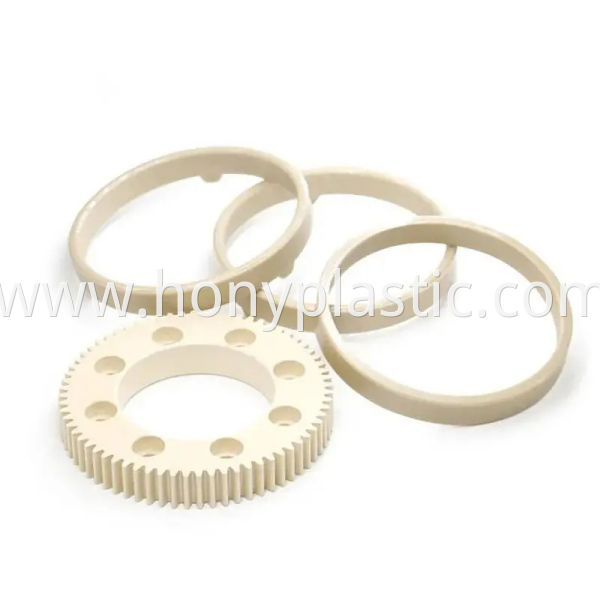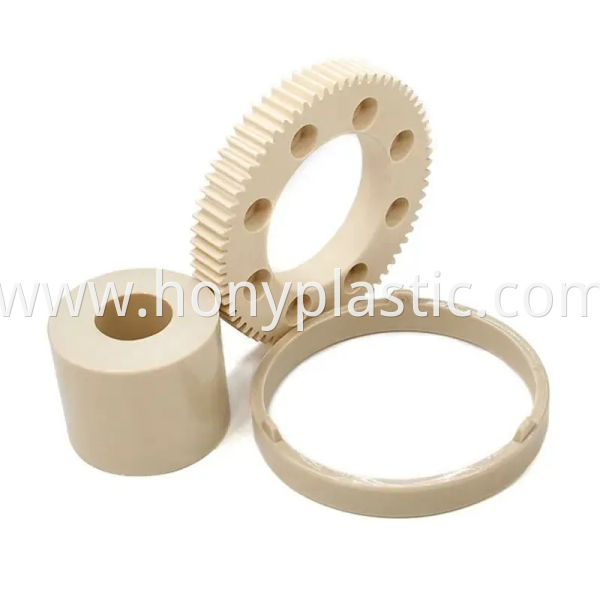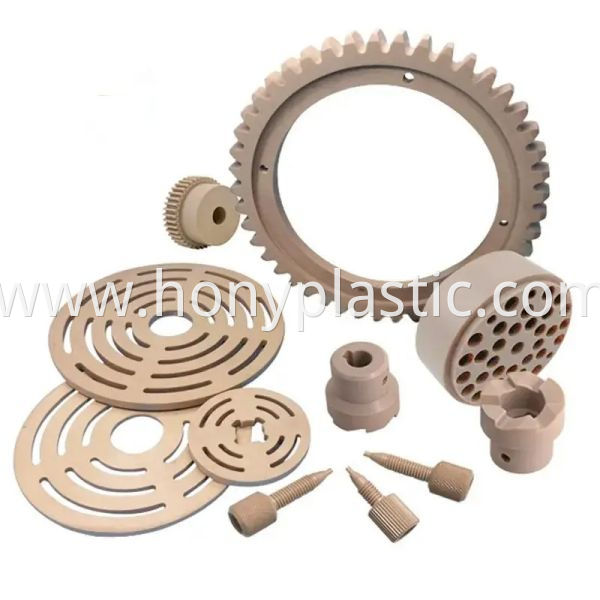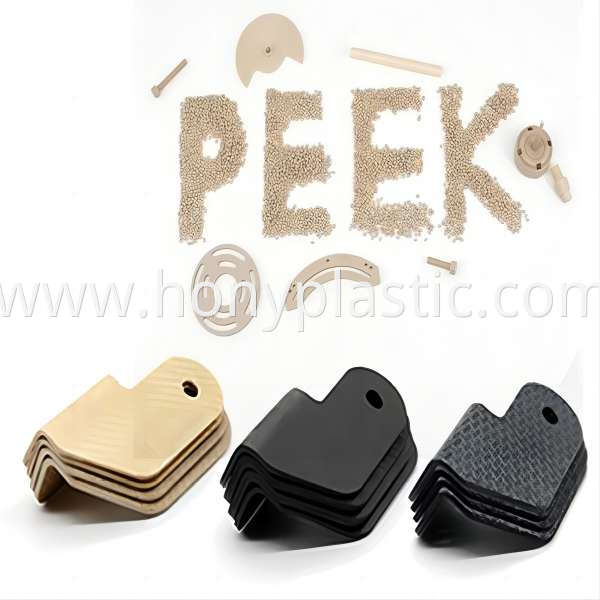Custom PEEK CNC Machining
Get Latest Price| Payment Type: | T/T,Paypal |
| Incoterm: | FOB,CFR,CIF,EXW,DDU,DDP |
| Min. Order: | 1 Piece/Pieces |
| Transportation: | Ocean,Land,Air,Express |
| Port: | Shenzhen,Guangzhou,Hongkong |
| Payment Type: | T/T,Paypal |
| Incoterm: | FOB,CFR,CIF,EXW,DDU,DDP |
| Min. Order: | 1 Piece/Pieces |
| Transportation: | Ocean,Land,Air,Express |
| Port: | Shenzhen,Guangzhou,Hongkong |
Model No.: HONYPLAS-PEEK
Brand: HONYPLAS
| Selling Units | : | Piece/Pieces |
| Package Type | : | Export package |
PEEK Material Machining Tool Guide
As a thermoplastic engineering plastic, PEEK Polyetheretherketone material is also very particular in its processing:
PEEK material features:
•PEEK shapes are stronger and harder than most plastics, but softer than most metals, which means processing tools are critical.
•Tools of all PEEK grades are more abrasive than softer plastics such as nylon and Acetal. This applies especially to grades reinforced with glass or carbon fibre. Carbide tools are available for short strokes. Part geometry, tolerances and grades also influence mold selection. Polycrystalline (PCD) tooling should consider long distances, tight tolerance parts and levels of reinforcement.
•PEEK has a lower elongation rate than many other plastics. Drilling deep holes into large cross-sections without enough coolant will cause cracking. Coolant can be used when processing PEEK. Water-soluble and petroleum-based coolants are available, and proper use of coolant will extend tool life and improve surface finish. Air, preferably from a cold air gun, can also be used on small parts, including those that are difficult to clean.
PEEK material processing tools pay attention to:
Insert: Positive geometry with grounded perimeter recommended. Fine grain C-2 carbide or PCD inserts are best, 360° chuck pressure is recommended to avoid deformation. When turning thin-wall tubing, machined soft jaws or pie jaws should be used. It is recommended that the chuck area of the blank be rough turned to improve roundness, and internal plugs should be used to prevent compression and deformation of thin-walled parts.
Drilling: Especially when drilling diameters exceed 2 times, care must be taken to minimize heat build-up, low auger bits and overflow coolant are best for drilling. It is recommended to use Peck drilling to remove chips. Coolant-fed drills are ideal for removing chips and preventing overheating. Larger diameter holes are best done with a two-step process that involves drilling pilot holes (1/2" diameter max) and drilling to final diameter. ½" diameter " or smaller holes can be drilled using a standard, carbide drill bit. To avoid breaking the backside, consider milling from both sides, which can be done with a small end mill.
Threading: During turning, single point inserts with overflow coolant should be used for threading, double fluted uncoated spirals
Threaded holes: It is recommended to use carbide taps. Tapping should be performed using cutting fluid, and fine tolerance threaded holes may require a tap one size larger than typically required for tapping aluminum or steel. When thread milling is floating, the tap head minimizes tap breakage common with smaller tap sizes.
Milling: Part fixtures are critical for milling because high spindle speeds and rapid travel are preferred to minimize frictional heat build-up, and material pullout. The tool should be designed with positive geometry as it provides better chip removal, lower tool wear and better surface finish.
Groove vertical: Milling cutters should be used whenever possible. Generally, during milling transitions, tool diameter and depth should be limited to 50% of the cutting tool diameter for optimal surface finish.
Sawing: A band saw is the preferred method for cutting PEEK shapes. It can be used both for straight cuts and for contour cutting. In addition to rods and tubular rods, it also includes plates. Material thickness and accuracy should be considered and sufficient clearance must be provided to minimize heat build-up. A three-piece blade with 2.5-3.5 teeth per inch is recommended. We have had good results using a 0.035" thick x 1" wide blade. Typically, having fewer teeth per inch than required for metal helps reduce heat build-up. It is recommended to start with a band saw speed of 2500 fpm and 3 teeth per inch.
Coolant (liquid and/or air): It is possible to use a table saw, but care must be taken to ensure safety. Residual stress within the shape can cause material to move closer to the blade. When using a table saw, it's best to cut sections to thickness. For tearing and combination blades, carbide tips are recommended. It is recommended to have fewer teeth per inch than on metal or wood. A 60-tooth 12" diameter rip and combination blade should produce smooth cuts in boards no thicker than 1/2", chop saws and radial arm saws can be used, but care must be taken to ensure safety. Residual stresses within the shape can cause material to move closer to the blade. When using a chop saw, it is necessary to make repeated partial cuts to minimize heat, buildup when cutting sections larger than 2". It is recommended to use rip blades and combination blades with carbide tips. We recommend a higher number of teeth per inch than for use on metal or wood The number of teeth is low. A 60 tooth 12" diameter rip and combination/blade should produce a smooth cut.









Privacy statement: Your privacy is very important to Us. Our company promises not to disclose your personal information to any external company with out your explicit permission.

Fill in more information so that we can get in touch with you faster
Privacy statement: Your privacy is very important to Us. Our company promises not to disclose your personal information to any external company with out your explicit permission.